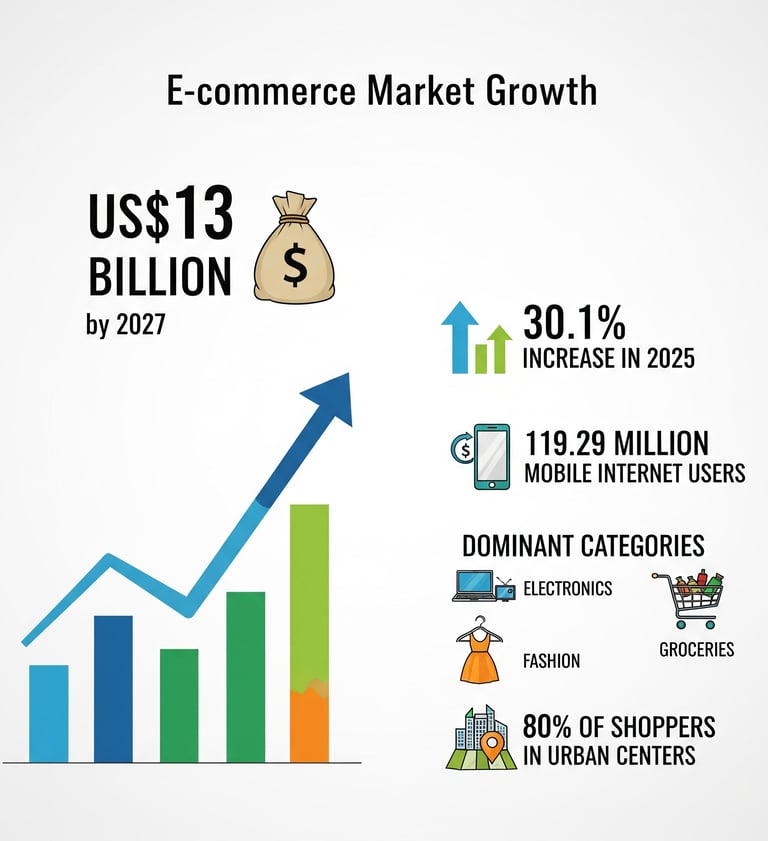Urbanization and Digital Payments Reshape Consumption
Mohammad Hasan
4/1/20241 min read
Market trends in Bangladesh's retail and e-commerce sectors are being profoundly shaped by rapid urbanization, a growing middle class, and the widespread adoption of digital payments. Here's a breakdown of the key dynamics and opportunities.
Dhaka and Chattogram are the epicenters of modern retail demand, driving the growth of both physical and online stores. The traditional, informal retail market still dominates, but modern trade is expanding. In fact, modern organized food retailing makes up around 8% of the estimated $16 billion food retail market and is growing annually at 15%. This shows a clear shift in consumer behavior toward quality and convenience.
E-commerce has seen strong growth, propelled by the rising number of mobile internet users. In June 2025, there were 119.29 million mobile internet users in Bangladesh, a significant jump that supports the increasing penetration of online purchasing. This trend is expected to continue, with projections showing a double-digit growth in e-commerce GMV (Gross Merchandise Volume) over the next few years, building on a robust growth rate of 30.1% in 2025.
Mobile Financial Services (MFS) have become a cornerstone of daily transactions and e-commerce payments. bKash and Nagad are the undisputed market leaders, with a combined market share of over 75% in terms of customers and over 85% in terms of transactions. These services have democratized financial access, allowing a large, previously unbanked population to participate in the digital economy.
To thrive in this evolving market, businesses must adopt an omnichannel presence, seamlessly blending brick-and-mortar stores with a strong online platform. Key differentiators include integrating digital payment solutions and investing in localized logistics, especially for last-mile and same-day delivery. This is particularly crucial for capturing the growing demand for food and perishable goods, which will require investments in cold chain and warehousing infrastructure.


